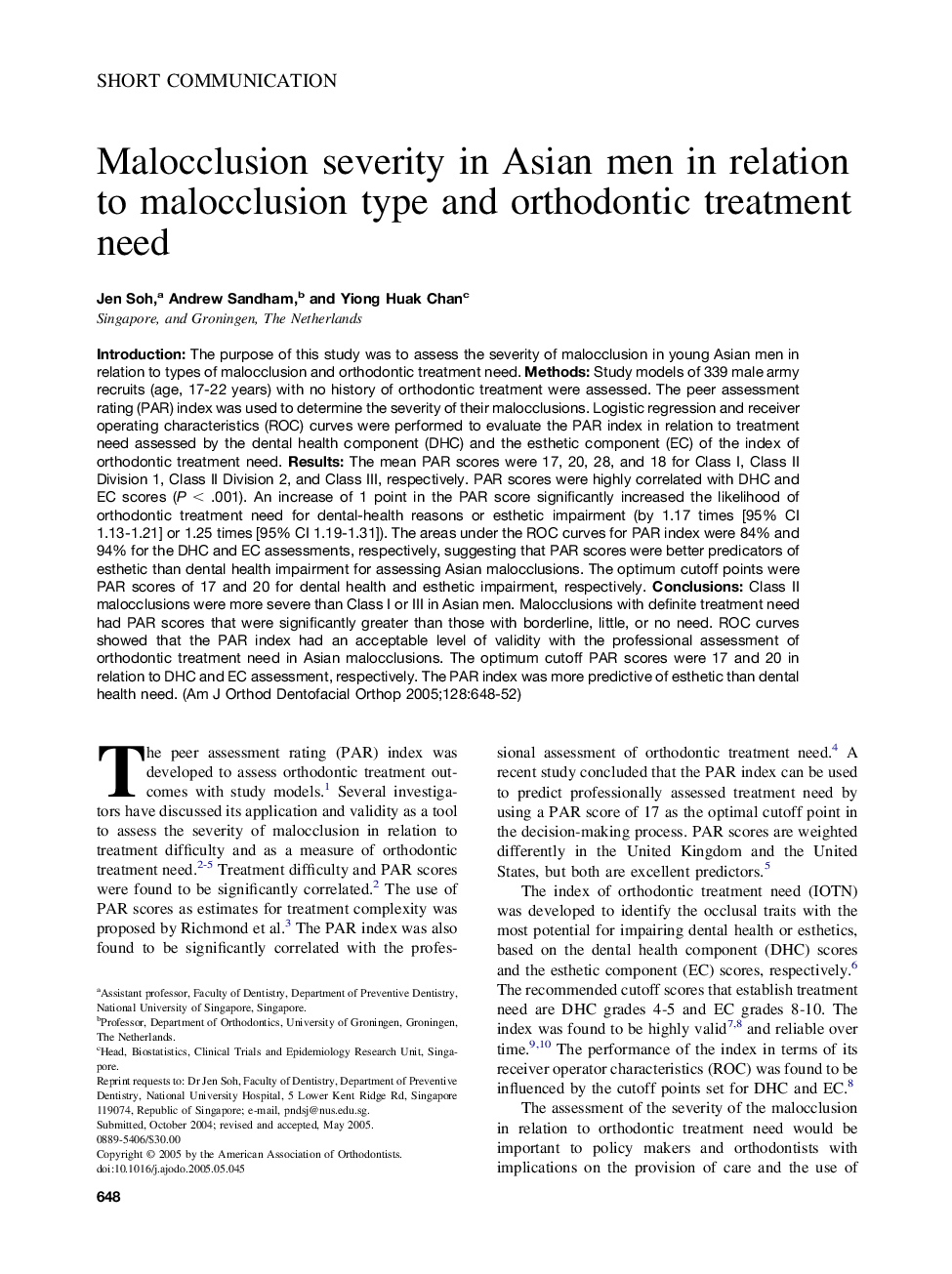| کد مقاله | کد نشریه | سال انتشار | مقاله انگلیسی | نسخه تمام متن |
|---|---|---|---|---|
| 9992550 | 1582813 | 2005 | 5 صفحه PDF | دانلود رایگان |
عنوان انگلیسی مقاله ISI
Malocclusion severity in Asian men in relation to malocclusion type and orthodontic treatment need
دانلود مقاله + سفارش ترجمه
دانلود مقاله ISI انگلیسی
رایگان برای ایرانیان
موضوعات مرتبط
علوم پزشکی و سلامت
پزشکی و دندانپزشکی
دندانپزشکی، جراحی دهان و پزشکی
پیش نمایش صفحه اول مقاله

چکیده انگلیسی
Introduction: The purpose of this study was to assess the severity of malocclusion in young Asian men in relation to types of malocclusion and orthodontic treatment need. Methods: Study models of 339 male army recruits (age, 17-22 years) with no history of orthodontic treatment were assessed. The peer assessment rating (PAR) index was used to determine the severity of their malocclusions. Logistic regression and receiver operating characteristics (ROC) curves were performed to evaluate the PAR index in relation to treatment need assessed by the dental health component (DHC) and the esthetic component (EC) of the index of orthodontic treatment need. Results: The mean PAR scores were 17, 20, 28, and 18 for Class I, Class II Division 1, Class II Division 2, and Class III, respectively. PAR scores were highly correlated with DHC and EC scores (P < .001). An increase of 1 point in the PAR score significantly increased the likelihood of orthodontic treatment need for dental-health reasons or esthetic impairment (by 1.17 times [95% CI 1.13-1.21] or 1.25 times [95% CI 1.19-1.31]). The areas under the ROC curves for PAR index were 84% and 94% for the DHC and EC assessments, respectively, suggesting that PAR scores were better predicators of esthetic than dental health impairment for assessing Asian malocclusions. The optimum cutoff points were PAR scores of 17 and 20 for dental health and esthetic impairment, respectively. Conclusions: Class II malocclusions were more severe than Class I or III in Asian men. Malocclusions with definite treatment need had PAR scores that were significantly greater than those with borderline, little, or no need. ROC curves showed that the PAR index had an acceptable level of validity with the professional assessment of orthodontic treatment need in Asian malocclusions. The optimum cutoff PAR scores were 17 and 20 in relation to DHC and EC assessment, respectively. The PAR index was more predictive of esthetic than dental health need.
ناشر
Database: Elsevier - ScienceDirect (ساینس دایرکت)
Journal: American Journal of Orthodontics and Dentofacial Orthopedics - Volume 128, Issue 5, November 2005, Pages 648-652
Journal: American Journal of Orthodontics and Dentofacial Orthopedics - Volume 128, Issue 5, November 2005, Pages 648-652
نویسندگان
Jen Soh, Andrew Sandham, Yiong Huak Chan,